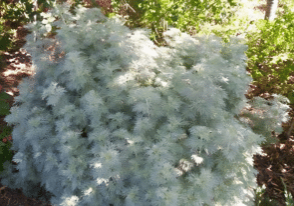Installing a Simple Drain
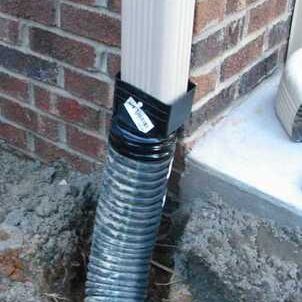
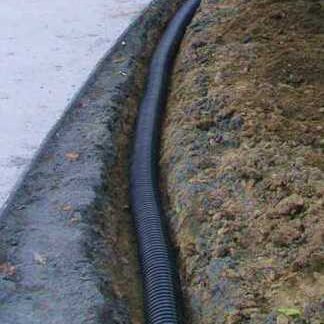
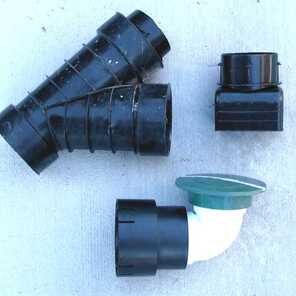
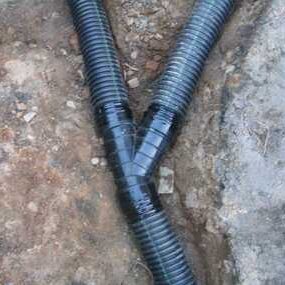

By Steve Pulliam
Steve Pulliam earned his MA and BS degrees from Columbia International University. He is the President of IntegrityWorks, LLC and HomeScape Carolina.
One of the most important things to consider in the landscape around a home is the control of rainwater; particularly near the home's foundation. Uncontrolled water flow can cause a variety of serious problems such as erosion, foundation settling, pooling beneath the home in the crawl space, etc. Many of those problems can also lead to expensive repairs.
There are many factors which can contribute to excessive amounts of water near the home, such as improper grading, poor soil conditions, past erosion where the landscape has changed, and diverted water from an existing gutter system. This article will address the common problem of diverted gutter water from a rooftop that is allowed to dump out next to the foundation of the home and provide a simple solution to divert the flow away from the home's foundation.
As stated earlier, because there are often several contributing factors regarding the collection of water around a homes foundation, there may need to be a multifaceted solution which may require an expert to come out and evaluate your particular problem.
That said, let's begin with what to do with all that rain water that spills out from the gutters around the home. To arrive at the best solution it is important to have an understanding of how much water you are dealing with first. It may surprise you to know how much water is dispersed from a typical 1 inch rain storm flowing from your rooftop. And often water flow from adjacent walkways and driveways can exacerbate the problem. There are complicated algorithms for calculating the volume of water from impervious surfaces but there are also helpful websites that allow you to simply plug in the square footage of your rooftop and/or driveway to determine how many gallons you will need to factor into your solution. One such site - USGS - http://water.usgs.gov/edu/earthrain.html, where I typed in a roof dimension of 70 x 40 ft determined that roof would divert 1,745 gallons of water for every 1 inch of rainfall. That's a lot of water!
After you have a fairly accurate estimate of water volume, you are ready to begin thinking about a basic design model. Things to consider:
1) Where to divert the water to - look for a logical exit point such as the street, the edge of the woods or perhaps an empty lot next door. Gravity will work in your favor if you are situated up hill from the exit point. If your home is in a low area, you may either need to dig a lot deeper to run your pipe or set up a sump pump to evacuate the water up hill.
2) What size and type of pipe to use - 4" or 6" plastic (poly) corrugated or PVC pipes can be used for most situations. Poly pipe is less expensive and comes in rolls of 100 ft. It is flexible, easy to maneuver with no gluing is required. It also means that you may be able to install the entire system without any joints in the pipe. Over-all, it makes for a fast and in-expensive installation. Thin-walled PVC pipe can be used as well. The basic advantage to PVC above Poly is that water moves through the pipe at almost twice the rate because there is less friction. However, the disadvantages are many. It is much more expensive, it typically comes in 20 ft. sticks requiring a glue joint at every point along the way, it has very little flexibility, which may mean - depending on the terrain - buying and gluing additional various and sundry couplers to along the way.
3) Will your system involve one gutter or more than one gutter. If more than one gutter, will you be connecting the two into one system? Depending on the roof surface area you are working with, it may require that you bump up to a 6" pipe. A basic rule of thumb is that a 4" horizontal drain line with a minimum of 1/4" drop per foot can handle the same amount of water as a 3" downspout. Combining two 4" pipes into one pipe might require a 6" pipe depending on how much roof surface is involved . A 6" pipe has the equivalent carrying capacity of two 4" pipes or two 3" downspouts.
After you have answered all of these concerns, it is time to make a materials list. Our project here involves two 3" downspout gutters moving water off of two small sections of roof. I decided to tie the two gutter systems together and pipe the water to the street 90 feet away and end with a pop-up emitter.
My parts list as follows:
100' roll of 4' corrugated flex poly pipe
(2) 3" gutter down-spout adapters
(1) poly "y" adapter to connect the two pipes together
(1) roll of tile (pipe) tape - made specifically taping poly pipe joints - do not use duct tape, it will disintegrate underground over time.
(1) pop-up emitter
Once you pick up all the materials, your are ready to begin excavation. NOTE: before you do any digging make sure you put a call into PUPS (Palmetto Utility Protection Services) at 1-888-721-7877 and listen to all of their standard disclaimers. It generally takes about 3-4 business days (excluding holidays and weekends) to have your property marked. You will also want to make sure and flag all of your sprinkler heads if you have irrigation system, as well as the water line from your meter to the house (PUPS is only responsible for water from the meter to the street). You will then need to decide whether to dig it by hand or rent a trencher machine. A trenching machine is much faster (especially if the ground is hard) but is very unforgiving should you hit a water line. However, it is more friendly to your back! We decided to dig ours by hand because the ground was relatively soft. By the way, I usually paint the path of my pipe with marker paint before I do any digging or purchasing as well as double check my measurements. It helps me to see the whole system before I actually install it and gives me the opportunity to modify it before I buy my parts.
The trench for a 4" pipe generally doesn't need to be more than 8-10 inches deep (X 5 - 6 inches wide) unless you have to go under something like a water pipe or large tree root. Over-all you want the depth to be fairly consistent without distinct ups and downs which could cause water to collect and stay in various sections of the pipe. Also, you need to have a consistent drop of at least 1/8" per foot (better to have 1/4" per foot if possible) to keep the water flowing quickly. If digging up sod, I cut it in small square sections and remove each section, in line, a few feet away. This make it very easy to replace each piece, in order, at the end of the job.
After the trenching is done, begin laying the pipe and making the connections. You will need a sharp utility knife to cut into the poly pipe. I generally start at the downspouts and connect my adaptors. I secure the adaptors to the gutter by using two or three small self-tapping sheet metal screws. Don't forget to tape all the joints above - but especially below - ground. Couplers do a fairly good job of holding the pipe together but they will leak out a little water (especially during a heavy storm). Without taping, there is a high probability that roots will find their way into the pipe and cause problems for you later on. This is not the place to take a shortcut!
Join the two sections of pipe with a "y" adaptor and tape securely as shown in the photo. It is best to make the area where the "y" adaptor goes a little over-sized to leave room for any adjustments in the angle to accommodate intersecting pipes.
Attach the pop-up valve at the streets edge. The valve not only looks better than the end of a pipe at the edge of your property but also keeps anything from getting inside it. It has a spring that holds it shut unless water is flowing through it. The force of the water opens the valve. I usually test the system after everything is installed before I bury it to make sure everything is working well. If any adjustment need to be made, this is the time to do it.
Congratulations! The job is finished. All that is needed is to bury the system, rake out the grade smooth, return sod sections back in place (if removed), blow off or sweep. Most home-owners can install a simple system like this one and save hundreds of dollars by not having to hire a landscape company. All you have to do now is to decide what to do with all that money you saved.
Please send you questions to "Ask the Editor" at www.homescapejournal.com/contact

